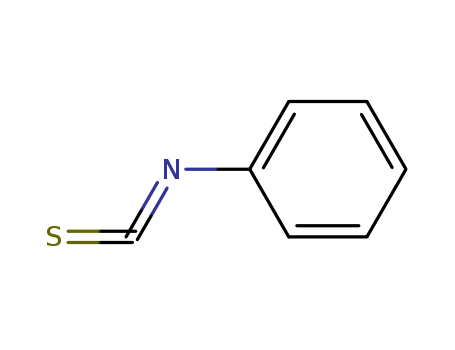10.1039/b109076n
The research investigates the substituent effect on the transition from ionic to covalent bonding in triphenylphosphonium ylide derivatives, focusing on the reactivity of 3-methyl-2,2,2-triphenyl-2H-cyclohepta[d][1,2λ5]oxaphosphole (1a) with heterocumulenes. The study employs X-ray crystal analysis, 31P and 13C NMR spectral studies, and chemical shift correlation with P1–O1 bond lengths to establish that compounds 1a–d exist as resonance hybrids of an oxaphosphole structure (A) and phosphonium ylide structures (B and C). The experiments involve the synthesis of 1a through the reaction of 2-chlorotropone with triphenylphosphonium ylide and subsequent reactions with phenyl isocyanate, diphenylcarbodiimide, and phenyl isothiocyanate to form heteroazulenes. The analyses include NMR, IR, and mass spectrometry, as well as elemental analysis, to characterize the products and confirm the structural hypotheses.
10.1007/s00706-007-0649-7
The research focuses on the synthesis of novel heterocyclic compounds, specifically 1,2,4-triazol-3-ylmethyl-, 1,3,4-oxa-, and -thiadiazol-2-ylmethyl-1H-[1,2,3]-triazolo[4,5-d]pyrimidinediones, which are potentially useful as antiviral agents against hepatitis B virus. The experiments involved the synthesis of 1-carbethoxymethyl-4,6-dimethyl-1H-[1,2,3]triazolo[4,5-d]pyrimidine-5,7(4H,6H)-dione and its subsequent reactions with hydrazine hydrate to yield a hydrazide. This hydrazide was further reacted with phenylisothiocyanate or carbon disulfide and KOH to produce thiosemicarbazide and oxadiazole derivatives. Various alkylation and cyclization reactions were performed to form the desired heterocyclic structures, including the formation of 1,3,4-thiadiazole, 5-mercapto-1,2,4-triazole, and 1,3,4-oxadiazole rings. The synthesized compounds were analyzed using techniques such as infrared (IR) spectroscopy, nuclear magnetic resonance (NMR) spectroscopy, and mass spectrometry (MS) to confirm their structures. The reactants used in these syntheses included phenylisothiocyanate, carbon disulfide, alcoholic potassium hydroxide, dimethyl sulfate, ethyl chloroacetate, and various monosaccharide aldoses. The synthesized compounds were tested for their antiviral activity, with some showing moderate activities against hepatitis B virus.
10.1515/znb-2008-1109
This research presents the synthesis and anticancer evaluation of novel 4-amino-3-(p-methoxybenzyl)-4,5-dihydro-1,2,4-triazole-5-one derivatives, aimed at developing potential anticancer agents. The study focused on the synthesis of these derivatives and their evaluation against a panel of 60 cell lines derived from nine cancer types. The conclusion drawn from the research was that the synthesized compounds showed mild antiproliferative activity, with the highest effectiveness observed against leukemia cell types, particularly the CCRF-CEM cell line, where compounds 3 and 6 exhibited tumoricidal activity. The chemicals used in the synthesis process included 4-amino-4,5-dihydro-1H-1,2,4-triazole-5-one, ethyl bromoacetate, hydrazine hydrate, various aromatic aldehydes, phenylisothiocyanate, sodium hydroxide, and benzyl bromide, among others. The synthesized compounds were then screened for their anticancer activity at a fixed dose of 10 μM.
10.1016/j.bmcl.2011.11.023
The research aims to develop new treatments for schizophrenia by identifying potent and selective PDE10 inhibitors. Schizophrenia is a mental illness affecting about 1% of the world's population, and current treatments are often ineffective against negative symptoms and cognitive disorders, while also causing adverse effects. PDE10, a dual cAMP/cGMP phosphodiesterase, is highly expressed in the striatal medium spiny neurons and its inhibition can mimic D2 dopamine receptor antagonism, potentially normalizing the reduced striatal output characteristic of schizophrenia. The researchers synthesized a series of pyrazoloquinoline analogs and optimized their chemical properties through structure-activity relationship (SAR) studies. Key chemicals used in the research include aniline, phenyl isothiocyanate, ethyl 2-chloroacetoacetate, and various heterocyclic amines. The study identified several highly potent and selective PDE10 inhibitors, such as compounds 16 and 27, which demonstrated significant oral antipsychotic activity in the MK-801 induced hyperactive rat model. The research concludes that these pyrazoloquinoline-based PDE10 inhibitors hold promise as novel therapeutic agents for schizophrenia, with compound 27 showing particularly favorable pharmacokinetic properties and safety profiles.
10.1039/C3976000503a
The study presents a novel method for converting oximes into thio-oximes. The researchers used sodium t-butoxide to generate the thio-oximate anion from benzophenone oxime. This process involved several steps: first, benzophenone oxime was reacted with phenyl isothiocyanate in dimethylformamide (DMF) to form an intermediate oxime thiocarbamate (I). This intermediate was then rearranged to form N-diphenylmethylene-O-phenylthiocarbamoylhydroxylamine (II) under specific conditions, such as stirring in hexane under sunlight or allowing the solid form to remain at room temperature. The final step involved treating compound (II) with sodium t-butoxide in DMF to produce the thio-oximate anion, which was then reacted with 2,4-dinitrofluorobenzene to yield N-(2,4-dinitrophenylthio)diphenylmethyleneamine. The study highlights the synthesis and characterization of these compounds, providing a detailed pathway for the conversion of oximes to thio-oximes, with significant yields and detailed spectral and elemental analysis for product identification.
10.1002/hc.10106
The study focuses on the synthesis and chemical behavior of 5-chloro-1,2,4-thiadiazol-2-ium chlorides (salts 3), which are useful precursors to a variety of 6aλ4-thiapentalene systems. These salts were obtained by treating formimidoyl isothiocyanates (1) with an excess of methanesulfenyl chloride. The salts exhibited interesting chemical behavior towards several nitrogen and carbon nucleophiles, leading to the formation of diverse polyheterapentalene systems. Key chemicals used in the study include isothioureas, acetamide, p-toluidine, phenyl isothiocyanate, and active methylene compounds like methyl cyanoacetate and dimethyl malonate. These reagents served to displace the 5-chlorine atom of the salts, leading to the formation of various heterocyclic compounds such as 1H,6H-6aλ4-thia-1,3,4,6-tetraazapentalenes (7), 6H-6aλ4-thia-1-oxa-3,4,6-triazapentalene (9), and other thiapentalene derivatives. The study utilized IR and NMR spectroscopic data for structural assignments and received additional support from X-ray analysis of substrate 16a. The purpose of these chemicals was to explore the reactivity of the thiadiazolium salts and to synthesize new hypervalent sulfur compounds through nucleophilic substitution reactions.



 T,
T,  N,
N,  Xn,
Xn,  F
F


